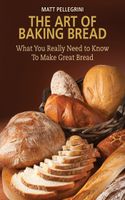Advertisement
Step Four: Bulk Fermentation
Published 2011
Bulk fermentation is the point where the gases in the dough work within the internal structure created by the kneading process to expand the dough or cause it to rise. It is during this stage of dough development that the flavors of the dough come to life. This stage of the bread-baking process is of particular significance when preparing straight dough (or dough in which all the ingredients are mixed at once) because the dough will not have as much time to ferment and develop flavor as the dough prepared with a preferment (i.e., dough that incorporates a biga or poolish) or one prepared with a starter (i.e., sourdough). While the prefermented dough and sourdough starters have had anywhere from one to five days to develop the flavor that will ultimately be passed on to the dough in which it is utilized, straight dough usually takes no more than three to four hours to produce.


